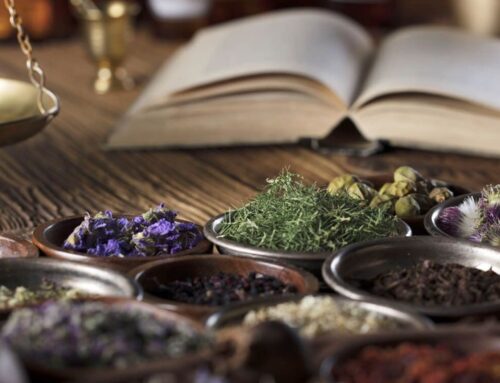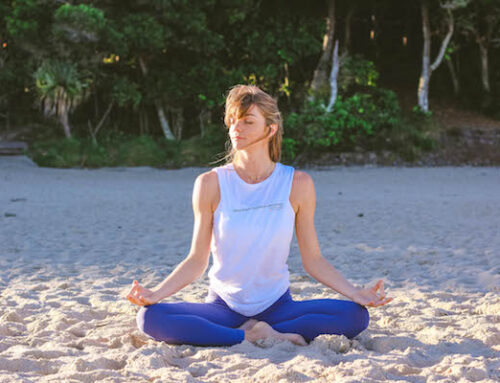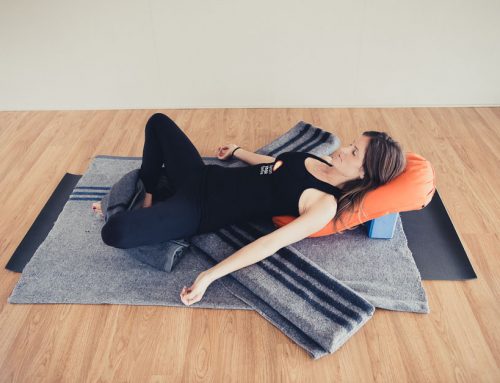Written by Brook McCarthy
When the cool winds of autumn begin blowing it is the season of vata, according to the traditional Indian natural health system of Ayurveda. Ayurveda recognises that each individual’s constitution is a unique combination of three principles called doshas – vata, pitta and kapha – with one dosha usually more dominant. As vata predominates in autumn, vata imbalance is common to all doshas, with symptoms including anxiety, stress, restlessness, exhaustion and underweight. But there are plenty of tips and techniques you can use to rug up against vata imbalance.
“Vata constitutions are connected to the air and space,” says Jacinta McEwen, Byron Yoga Centre Ayurveda teacher trainer. “So they are similar to the wind – dry, cool and capable of fast, unpredictable movement and thought.”
One of the best and often overlooked things you can do when the days begin to shorten is simply to stay warm. Keep regular mealtimes and nourish yourself with warm, moist foods such as soup, cooked whole grains and root vegetables. Eating too many raw and dry foods such as nuts, chips, and uncooked vegetables can aggravate a vata imbalance during autumn and into winter. Look after yourself by doing abhyanga – an Ayurveda self-massage using oil – several times per week. Massage the body with warm black sesame oil from the extremities inwards to help nourish joints, skin and the nervous system. Keep yourself warm in an old warm dressing gown and socks and do your sadhana, meditation practice, for at least half an hour to give the oil time to seep in before showering.
Changing seasons are often times of flux for personal routines but keeping a routine during the autumn changeover is particularly helpful for keeping your body steady and your mind relaxed. Like all times of flux, slowing down and being more mindful is very good for keeping the mind focused and the body strong. Try setting aside some time for silence during the day outside of your sadhana practice and focusing on doing just one thing at a time. Limiting your stimulus by avoiding bars, movies and parties helps relax your nervous system. This is a good time to go for a bush walk or sit and gaze at the horizon.
Getting to bed by 10pm for a full eight hours’ sleep will have a noticeable impact on your health during this time. “To counteract restlessness, slow down your asana practice,” says Jacinta. “Hold poses longer than you usually do, be more gentle with your practice and take savasana in between poses. This is the time for reclining and restorative poses, not for trying adventurous new backbends.”
Another technique for calming, soothing and healing the nervous system is the use of medicated oil in the nostrils, called nasya. “Nasya balances vata, pitta and kapha, unblocks the sinuses and strengthens our respiratory and immune systems.” Our breath directly affects our state of mind, our nervous energy and our nerve cell activity, so lubricating our nostrils impacts the air we breathe in. Nasya is performed by applying two to five drops of warm Nasya oil, or black sesame oil to the inner nostrils then sniffing strongly to try and sniff the oil onto the back of the throat. A little oil can also be massaged onto the skin around your eyes starting at the inner edge and continuing around your eye socket.
“Lots of ayurveda techniques like Nasya are simple and easy to incorporate into your life,” says Jacinta. “Like yoga asanas, ayurveda is an inherently practical system with numerous methods to apply to your life everyday. If you are busy, just start doing one method. Five minutes of self-massage or nasya every day will reap the benefits and is better than spending one hour once a week or not doing anything at all.”
More information from Jacinta McEwen on Ayurveda philosophy and techniques can be found at the website of Mullumbimby Herbals: www.mullumherbals.com.





